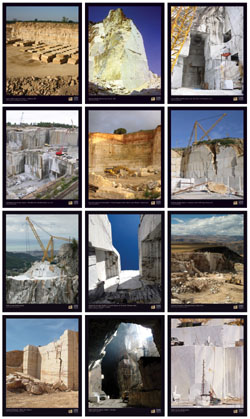“St. Andrew’s School is a beautiful idyllic collegiate Gothic campus on a pond,” said Daniela Voith, AIA, LEED, IIDA of Voith & Mactavish Architects LLP in Philadelphia, PA. “It is very much a rural setting. The main entrance drive comes in along the playing field. As you drive, you start to see the lovely, delicately scaled collegiate Gothic historic buildings.
“The field house is the first building seen as one turns into campus,” Voith went on to say. “Since field houses tend to be large boxy structures — without a lot of detail — the trustees were nervous about it. They hired us to come up with a design scheme to satisfy their programmatic needs as well as their aesthetic desires.”
In addition to building the new field house, which is the size of three basketball courts, side by side, Voith & Mactavish Architects was also tasked with restoring the historic gymnasium. “It’s a sweet structure,” said Voith. “Adding a 52,000-square-foot structure next to an 8,000-square-foot building without overpowering it really was a challenge.”
The school’s trustees also required a sustainable design. “Originally, they challenged us to achieve Platinum, but because of the 2008 financial downturn the school reduced its ambitions and we succeeded with what I call a ‘Mid-Gold’ LEED, scoring 49 points,” explained the architect.
Because it was important that the new field house blend with the existing architecture on campus, careful thought was given to the design. “One of the primary design moves we made was to push the floor of the building down 15 feet,” said Voith. “This added expense as all the egress exits are stairwells, but the plus was that the main eave of the building is about 12 feet from the ground with a series of gable ends rising above that eave. The entire facade presentation is extremely low scale. It looks tiny, actually. People come into the building, and they are surprised at how much space there is.”
Building with stone
According to Voith, the original buildings on campus were made from local stone. “We really wanted to tie in a more contemporary structure with the historic architecture,” she said. “We wanted the stonework to blend perfectly.”
The exterior facade of the new field house consists of a mix of Wissahickon Schist and granite, which was supplied by South Delaware Masonry. On average, the stone pieces ranged from 12 to 18 inches in length and 9 inches high.
“It is a warm color overall,” explained the architect. “There are shades of gold and brown with gray mixed in.
“One of the most endearing aspects of the masonry story is that some of the masons that laid up the stone are descendants of ones who worked on the original buildings,” Voith continued. “It’s very much in their blood, and they were very familiar with the blend and the mix. They did some mock-ups for us, but the process was smooth.”
To complement the Wissahickon Schist and granite, large pieces of carved Indiana limestone form detailing around the entrance to the field house. “We used Indiana limestone because that was typical of other buildings,” said Voith, adding that Indiana limestone was also incorporated into the existing masonry wall of the existing gymnasium. “We wanted to make an entrance which tied the new field house to the old.
We also used stone on the inside of the building — essentially matching the exterior schist and granite mix — primarily as an accent wall at the entrance.”
Indiana limestone was also incorporated into the existing masonry wall of the existing gymnasium. “We wanted to make an entrance which ties into the new field house,” explained Voith.
Additional stone used on the project includes Pennsylvania slate, which was used for window sills, the entry floor and stairs inside the building, and landing levels and stair treads. “I like to use slate as window sill material because it doesn’t rot if it gets wet.”
Meanwhile, Bluestone was employed as plaza paving in the front of the building. Indiana Stone Works, Inc. of Bedford, IN, manufactured the limestone, and it was distributed through Vickery Stone Co. of Havertown, PA, which also supplied the slate and Bluestone. In all, the project took approximately five years from start to finish.
|
St. Andrew’s School |
|
Sipprelle Field House |
|
Middletown, DE |
|
Architect: Voith & Mactavish Architects LLP, Philadelphia, PA |
|
Stone Mason: South Delaware Masonry, Townsend, DE |
|
Limestone Producer: Indiana Stone Works, Inc., Bedford, IN |
|
Stone Suppliers: South Delaware Masonry, Townsend, DE (Wissahickon Schist, granite); Vickery Stone Co., Havertown, PA (limestone, slate, Bluestone) |














